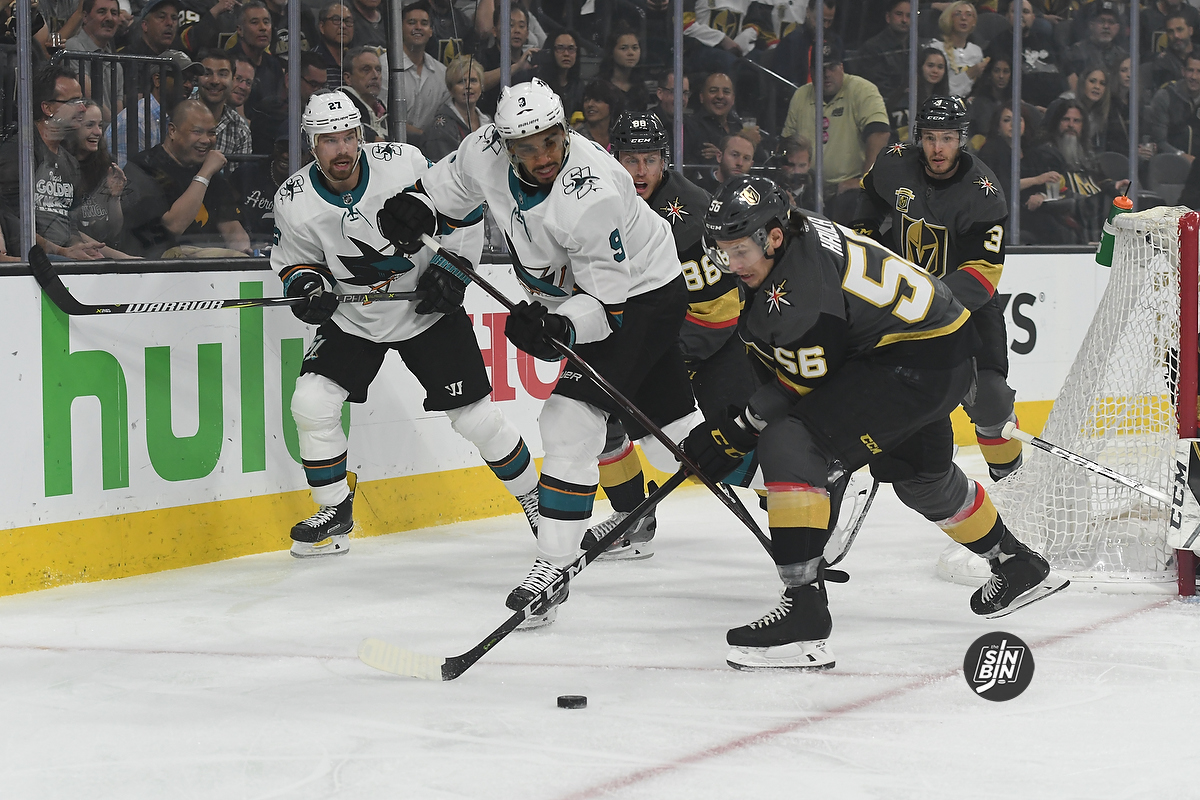San Jose Sharks
Sharks Don’t Need Right-Handed Forwards

What do the San Jose Sharks need up front?
It seems obvious: They need scoring. Or at least competence.
Last week, I wrote about San Jose having just 10 NHL-proven forwards in October 2019, in a season where they finished as the worst team in the Western Conference. One year later, they have…10.
But do they need more right-handed forwards in particular?
It’s been a common refrain this off-season: In addition to the aforementioned qualities, the Sharks are also desperately lacking right-shooting forwards.
On the surface, this appears to be the case: The San Jose Sharks currently have just three righties up front, Kevin Labanc, Dylan Gambrell, and Stefan Noesen.
Assuming San Jose starts next season with 13 forwards, that 23 percent is lower than the league average.
In 2019-20, 35.3 percent of the NHL’s forwards were right-handed.
Does this mean the Sharks should, if they’re still seeking free agent help up front, focus solely on right-shooting forwards?
If they are, it’s a lean list: Ilya Kovalchuk and Corey Perry are the only righty UFA forwards remaining on the market who averaged more than 13 minutes a night this season. Otherwise, want to bite on Melker Karlsson, Trevor Lewis, or Nick Shore?
So are the San Jose Sharks in big trouble next year?
Not necessarily, at least in this department.
A cursory look at top-nine forwards for Stanley Cup-winning squads since 1997-98 — when Time on Ice was first tracked — suggests that evenly-distributed handedness up front isn’t a deal-breaker.
| Stanley Cup Winner, Top-9 Forwards | Year | Left-handed | Right-handed |
|---|---|---|---|
| TBL | 2020 | 7 | 2 |
| STL | 2019 | 5 | 4 |
| WSH | 2018 | 4 | 5 |
| PIT | 2017 | 6 | 3 |
| PIT | 2016 | 7 | 2 |
| CHI | 2015 | 7 | 2 |
| LAK | 2014 | 4 | 5 |
| CHI | 2013 | 7 | 2 |
| LAK | 2012 | 4 | 5 |
| BOS | 2011 | 4 | 5 |
| CHI | 2010 | 6 | 3 |
| PIT | 2009 | 7 | 2 |
| DET | 2008 | 8 | 1 |
| ANA | 2007 | 6 | 3 |
| CAR | 2006 | 6 | 3 |
| TBL | 2004 | 7 | 2 |
| NJD | 2003 | 6 | 3 |
| DET | 2002 | 3 | 6 |
| COL | 2001 | 7 | 2 |
| NJD | 2000 | 6 | 3 |
| DAL | 1999 | 4 | 5 |
| DET | 1998 | 4 | 5 |
| DET | 1997 | 4 | 5 |
Based on post-season Time on Ice, eight of the last 23 title teams featured 7-2 or 8-1 LH-RH combinations in their top-nine, including this year’s Tampa Bay Lightning.
Now talking about next year’s San Jose Sharks and the Stanley Cup is far-fetched. But the point is: Don’t worry too much about handedness up front. It’s a nice thing, but you can win with a lopsided number of lefties — as the 2008 Detroit Red Wings did — or a lopsided number of righties — as the 2002 Red Wings did.
“That the Sharks don’t have a lot of right-shot forwards probably doesn’t impact their ability to perform one way or another,” San Jose Hockey Now contributor Erik Fowle offered. “Unless there’s research that shows a certain distribution of handedness improves performance among a team’s forward corps, it’s probably not worth worrying about.”
Left-handed, right-handed, doesn’t matter — the Sharks simply need sure-handed forwards.


















